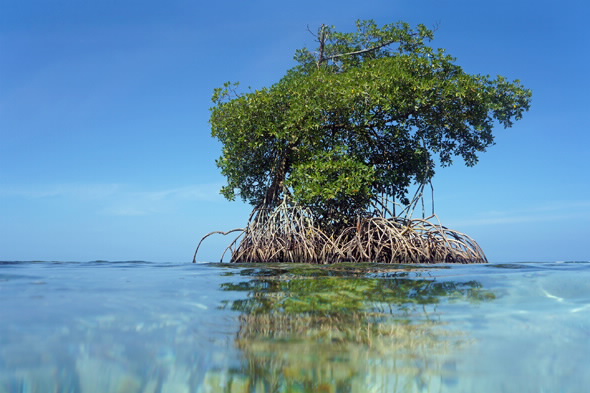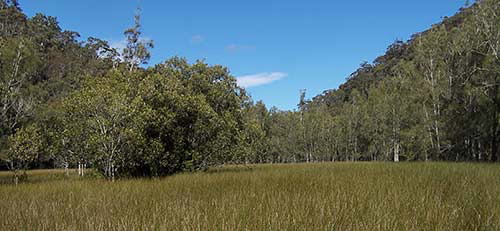Cutting edge Australian research is helping explain the dominant role marine and coastal ecosystems play in storing carbon to offset greenhouse gas emissions; a major cause of climate variability.
 |
Blue carbon is a concept name for the capture and storage of atmospheric carbon in the marine environment.
The concept is that coastal vegetation stores carbon far more effectively and permanently than terrestrial forests and freshwater wetlands, where organic carbon is often re-mineralised and lost to the atmosphere.
Mangrove and saltmarsh are considered the most efficient wetlands for sequestering carbon because the saline conditions inhibit the capacity of methanogenic bacteria which are responsible for methane (greenhouse gas) emissions.
Until now though, there’s been limited measureable studies to understand this carbon flux process, as estimates of carbon store and carbon accumulation rates at a particular site are beset by issues of scale and provenance and thus do not scale to regional estimates. This is now changing as researchers find ways to identify the possibilities for blue carbon.
The value of their efforts not only helps to explain the potential of these natural phenomena, but it also plays a vital role in promoting the importance of restoration and conservation of coastal vegetation.
ANSTO’s Dr Debashish Mazumder has been doing his part in these efforts with the use nuclear science techniques.
The research scientist from the Institute for Environmental Research based at Lucas Heights in Sydney was part of a collaborative research team including Professor Neil Saintilan, Dr Kerrylee Rogers and Professor Colin Woodroffe of the University of Wollongong.
They selected 10 southeast Australian estuaries extending across 2000km of coastline and used a range of methods including isotope geochemistry to determine the source of carbon accumulating in mangrove and saltmarsh.
 |
| Blue carbon as a concept suggests coastal vegetation stores carbon far more effectively and permanently than forests and freshwater wetlands. |
Some of their work involved measurements using a continuous flow isotope ratio mass spectrometer (CF-IRMS) interfaced with an elemental analyser, which is a precious method for analysing stable isotopes and is a capability that’s helping ANSTO contribute to national and international research in environmental science.
"The results of our research indicate that carbon accumulating on the wetlands surface is driven primarily by tidal transport of terrestrial carbon and litter fall from the forest," Dr Mazumder said.
"However, much of this carbon degrades, and the dominant source of long-term carbon stored in the soil comes from mangrove and saltmarsh root material.”
“The paper was published in one of the leading International journals and was described by the editor as a cutting edge contribution," he said.
Wetlands play an important role in cycling of carbon, water and nutrients and habitat for many kinds of animals and plants through photosynthesis and accumulation of organic matter in soils, sediments and plant biomass.
 |
| Samples taken from selected Australian estuaries were measured using the isotope ratio mass spectrometer (CF-IRMS) |
In general wetland plants grow at a faster rate than they decompose, contributing to a net annual carbon sink. It’s hoped the work of these researchers will reinforce the message to decision makers of the importance of protecting marine environments.
Over the past few decades there have been substantial changes to the estuarine ecosystems throughout much of the New South Wales coast.
Changes in vegetation, coastal development for accommodating population growth in the coastal cities, coupled with predicted sea-level rise have impacted mangrove and saltmarsh wetlands and associated biodiversity and ecosystem services of wetlands.
A report on their findings was published in Estuarine, Coastal and Shelf Science. Download the report for more information.


